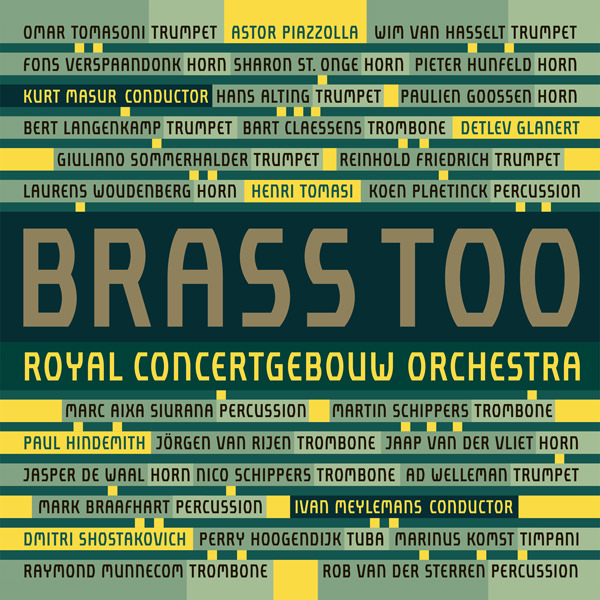
Brass Too – Royal Concertgebouw Orchestra, Ivan Meylemans, Kurt Masur (2015)
FLAC (tracks) 24-bit/88,2 kHz | Time – 63:06 minutes | 987 MB | Genre: Classical
Studio Master, Official Digital Download – Source: ProStudioMasters | Booklet, Front Cover | © RCO Live
Recorded Live at Concertgebouw Amsterdam on 26-28 January 2011 (Hindemith, live); 27 May 2013 (Piazzolla); 20 December 2013 (Glanert); 6 March 2014 (Tomasi) and 14 March 2014 (Shostakovich)
This is the sequel to the highly successful album Brass which put the brass section of the Royal Concertgebouw Orchestra in the spotlight. Seven years later comes Brass Too, the pun in the title also pointing to the idea behind this album: the works of Shostakovich and Piazzolla, for instance, were not originally written for brass, but in these arrangements they sound lovely. Although Hindemith is not known as a composer of brass music, he has written for this family of instruments too. The album includes a new work by the RCO’s house composer Detlev Glanert proving that brass can sound completely different.
There are few more thrilling noises than that of a brass/wind band in full cry. Last year I had the pleasure of hearing two memorable examples of the breed: a high-res download of John Pickard’s virtuosic Eden and Gaia Symphony (review) and a high-tingle-factor Blu-ray Audio disc from 2L entitled La voie triomphale. The prowess of those two ensembles – the Eikanger-Bjørsvik Musikklag and The Staff Band of the Norwegian Armed Forces respectively – is beyond question; indeed, they take the genre way beyond its somewhat anorakish following and give it the serious status it so richly deserves.
This enterprising album – a follow-up to Brass (RCO Live RCO 07002) – showcases the Concertgebouw’s peerless brass and percussion sections, not to mention their formidable strings in Hindemith’s Konzertmusik. It’s a well-chosen programme, beginning with an arrangement of four numbers from Shostakovich’s Gadfly Suite by Steven Verhaert; the latter is also a trumpet teacher and player with the Royal Flemish Philharmonic. In the liner-notes Verhaert says the selection is designed to offer maximum contrast and variety.
Does it succeed? Emphatically, yes. The sheer weight and superior blend of these Dutch players is a wonder to behold. However, all that technique doesn’t count for much unless it’s firmly focused on musical values; happily this artful arrangement ensures those elements are always paramount. The Barrel Organ Waltz is a case in point; lightly scored and delectably played it’s a nimble number that highlights the knife-edge articulation of these players. As for the Keystone-Kops-like Galop it rollicks with the best of them; the yearning Romance is nicely done and the timps and bass drum add martial splendour to the Finale.
Just as impressive as the playing is the full-blooded and very well balanced recording. The temptation with ensembles and repertoire such as this must be to go for a crude ‘hi-fi spectacular’; that’s certainly not the case here, for all the pleasure and excitement comes from hearing these instruments in their pure, unforced state. The result is uncannily close to the delicious frisson and bodily impact one feels on hearing these instruments live, and that’s a remarkable achievement. Next up is Concertgeblaas, Detlev Glanert’s punny little interlude for 12 brass instruments and percussion. Premiered by this group in 2012, the work’s blend of asperity, rhythmic verve and big-band pizzazz is a delight from start to finish.
I first encountered the Corsican composer Henri Tomasi’s Fanfares liturgiques, culled from his radio-play-turned-opera Don Juan de Mañara, on La voie triomphale. The music, which depicts a religious festival in Seville, begins with the heraldic Annonciation, which soon modulates into something rather more sombre. The musical fabric is plainly dyed, the weave simple, but the bright threads of Evangile add colour to this solemn processional. Here and in the quirky Apocalypse the agility of these players is astonishing, and the dark-hued Procession du Vendredi-Saint exudes a pleasing pliancy throughout. The quieter passages are eloquently voiced, and the potentially brazen climax is tastefully done.
Good taste and good judgment are the watchwords here, even when the music invites the players to excess. That’s certainly true of the composer/arranger/trombone player Steven Verhelst’s take on Astor Piazzolla’s tango operita, María de Buenos Aires. This suite was suggested by the RCO’s principal trombonist Jörgen van Rijen, who plays a key role in the piece. Interestingly two trumpets, with and without sneering mutes, mimic the bandoneón, a concertina-like instrument used in tango ensembles. However, it’s the rich, in-your-boots sound of the trombone that really draws the ear. Not only that, the slink and slide of this seductive music is nicely sistained.
This is one of those rare collections that you can listen to in one sitting, such is the level of variety and interest on show. Moreover, there’s a real sense of fun here, and that’s readily communicated to the receptive listener. These players – the bedrock of one of the world’s great Mahler orchestras – wear their virtuosity so lightly, and that’s an added bonus. The album ends with a live account of Hindemith’s Op. 50 Konzertmusik, conducted by Kurt Masur. This is a big-boned performance whose bold brass chords invariably bring to mind the composer’s Mathis der Maler symphony. As before the sound is exemplary.
This is a thoroughly entertaining release that’s prompted me to seek out the first one in the series. Brass playing does not come much better than this, and the Polyhymnia team have done the music proud. Also, I’m pleased to see the brass and percussion players credited so prominently in the well-designed, easy-on-the-eye liner-notes. What a blast; not to be missed. -Dan Morgan, MusicWeb International
Tracklist:
Dmitri Shostakovich (1906-1975)
The Gadfly Suite, Op. 97a (arr. Steven Verhaert)
1 I Ouverture 3’16
2 II Barrel Organ Waltz 2’15
3 III Galop 1’49
4 IV Romance 3’16
5 V Finale 3’21
Detlev Glanert (b. 1960)
6 Concertgeblaas 3’50
Henri Tomasi (1901-1971)
Fanfares liturgiques from Don Juan de Mañara
7 I Annonciation 2’10
8 II Evangile 3’31
9 III Apocalypse (Scherzo) 3’19
10 IV Procession du Vendredi-Saint 9’19
Astor Piazzolla (1921-1992)
María de Buenos Aires Suite (arr. Steven Verhelst)
11 Yo Soi María – Balada para un Organito Loco – Habanera 6’20
12 Fuga y Misterio 4’32
Paul Hindemith (1895-1963)
Konzertmusik, Op. 50
13 I Mäßig schnell, mit Kraft – Sehr breit, aber stets fließend 8’06
14 II Lebhaft – Langsam – Im ersten Zeitmaß (lebhaft) 8’02
Personnel:
Brass and Strings of the Royal Concertgebouw Orchestra
Ivan Meylemans, conductor
Kurt Masur, conductor #13-14
Download:
mqs.link_BrassTRCIvanMeylemansKurtMasur2015PrStudiMasters2488.2.part1.rar
mqs.link_BrassTRCIvanMeylemansKurtMasur2015PrStudiMasters2488.2.part2.rar




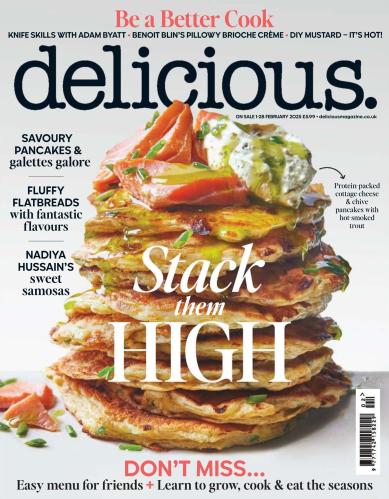














![Gewandhausorchester Leipzig, Kurt Masur - Mendelssohn: Early Symphonies (2023) [FLAC 24bit/96kHz] Gewandhausorchester Leipzig, Kurt Masur - Mendelssohn: Early Symphonies (2023) [FLAC 24bit/96kHz]](https://imghd.xyz/images/2023/02/20/ktrqs5ophx6fa_600.jpg)
![Pacifica Quartet - Dmitri Shostakovich and his Contemporaries: The Soviet Experience Vol. 1-4 (2011-2013) [24bit FLAC] Pacifica Quartet - Dmitri Shostakovich and his Contemporaries: The Soviet Experience Vol. 1-4 (2011-2013) [24bit FLAC]](https://getimg.link/images/imgimgimg/uploads/2017/07/ntIbtOp.jpg)
![The Brass of the Royal Concertgebouw Orchestra with Ivan Meylemans (2007) [Qobuz FLAC 24bit/88,2kHz] The Brass of the Royal Concertgebouw Orchestra with Ivan Meylemans (2007) [Qobuz FLAC 24bit/88,2kHz]](https://getimg.link/images/imgimgimg/uploads/2017/09/6WnFRcB.jpg)
![Royal Concertgebouw Orchestra, Daniele Gatti - Berlioz: Symphonie fantastique (2016) [ProStudioMasters FLAC 24bit/352,8kHz + 24bit/176,4kHz] Royal Concertgebouw Orchestra, Daniele Gatti - Berlioz: Symphonie fantastique (2016) [ProStudioMasters FLAC 24bit/352,8kHz + 24bit/176,4kHz]](https://getimg.link/images/imgimgimg/uploads/2018/10/kfTVJcl.jpg)
![Andris Nelsons, Boston Symphony Orchestra - Shostakovich: Symphonies Nos. 5, 8 & 9; Suite From "Hamlet" (2016) [FLAC 24bit/96kHz] Andris Nelsons, Boston Symphony Orchestra - Shostakovich: Symphonies Nos. 5, 8 & 9; Suite From "Hamlet" (2016) [FLAC 24bit/96kHz]](https://getimg.link/images/imgimgimg/uploads/2017/08/GBVruYe.jpg)
![Kim Kashkashian & Lera Auerbach - Arcanum (2016) [FLAC 24bit/96kHz] Kim Kashkashian & Lera Auerbach - Arcanum (2016) [FLAC 24bit/96kHz]](https://getimg.link/images/imgimgimg/uploads/2019/07/4LY1DNi.jpg)
![Maria Callas - Remastered The Complete Studio Recordings 1949-1969 (2014) [Qobuz FLAC 24bit/96kHz] Maria Callas - Remastered The Complete Studio Recordings 1949-1969 (2014) [Qobuz FLAC 24bit/96kHz]](https://getimg.link/images/imgimgimg/uploads/2018/12/Vw7IHlv-1.jpg)
![Dmitri Shostakovich - The Two Violin Sonatas and Rare Chamber Works - Sasha Rozhdestvensky, Jeremy Menuhin... (2016) [HighResAudio FLAC 24bit/96kHz] Dmitri Shostakovich - The Two Violin Sonatas and Rare Chamber Works - Sasha Rozhdestvensky, Jeremy Menuhin... (2016) [HighResAudio FLAC 24bit/96kHz]](https://getimg.link/images/imgimgimg/uploads/2017/08/uiOnzDc.jpg)
![London Philharmonic Orchestra & Kurt Masur - Beethoven: Symphonies Nos. 3 & 5 (2019) [FLAC 24bit/44,1kHz] London Philharmonic Orchestra & Kurt Masur - Beethoven: Symphonies Nos. 3 & 5 (2019) [FLAC 24bit/44,1kHz]](https://getimg.link/images/imgimgimg/uploads/2019/08/Q1VH5Cz.jpg)
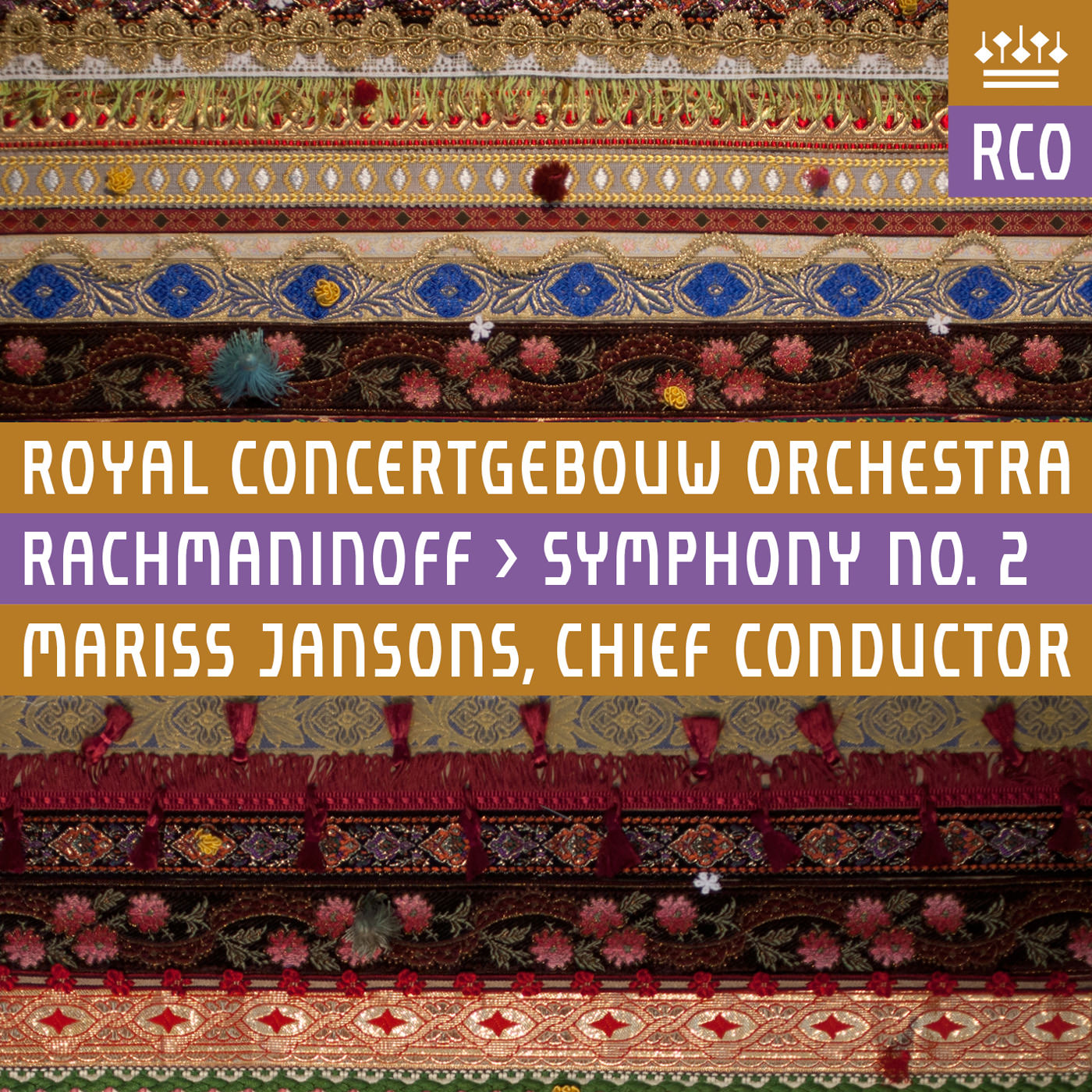
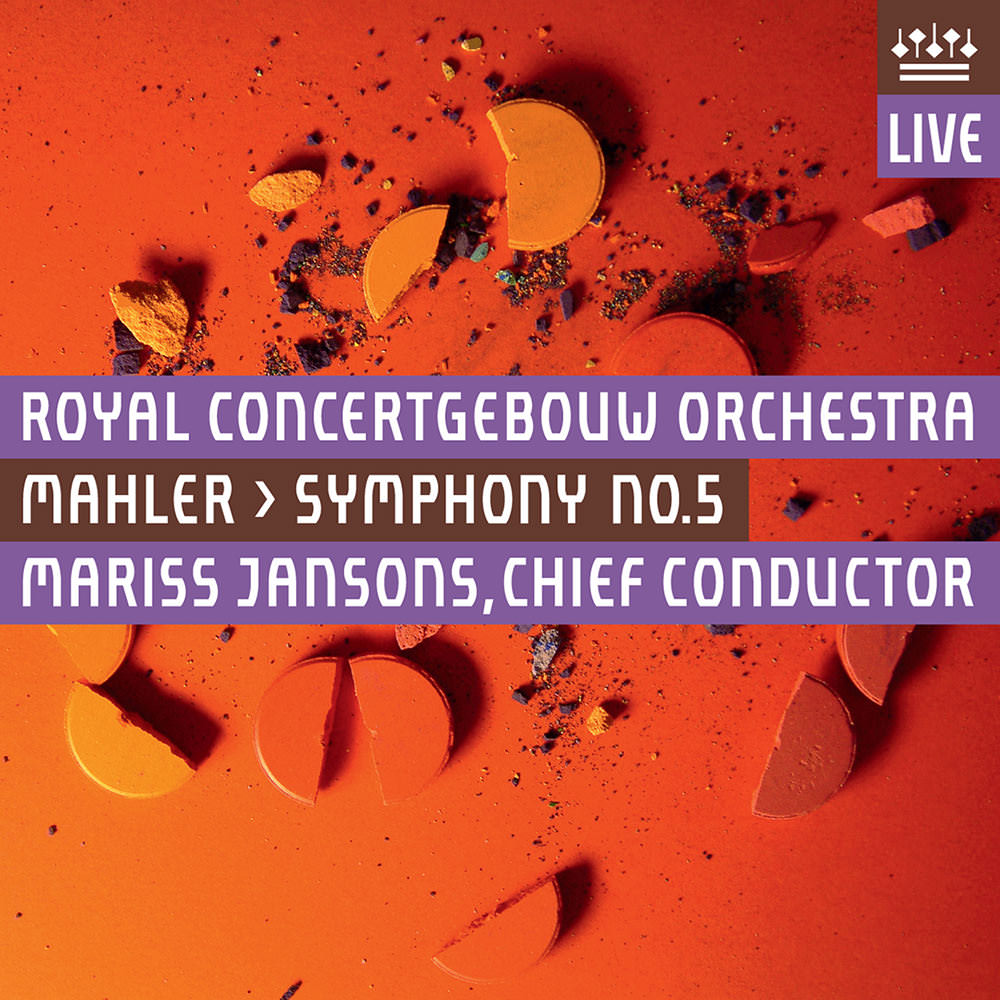
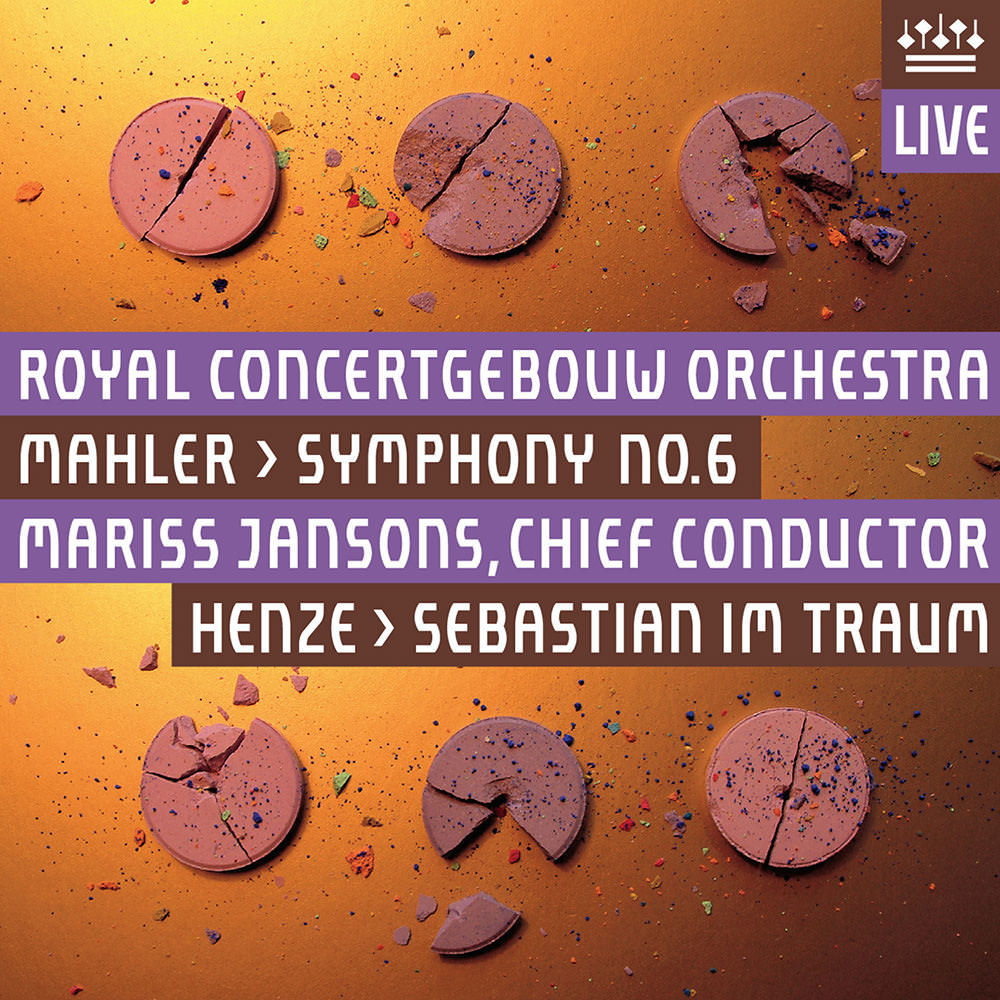
![Sir Colin Davis, London Symphony Orchestra - Haydn: Symphonies Nos. 92 & 93, 97-99 (2014) [Qobuz FLAC 24bit/96kHz] Sir Colin Davis, London Symphony Orchestra - Haydn: Symphonies Nos. 92 & 93, 97-99 (2014) [Qobuz FLAC 24bit/96kHz]](https://getimg.link/images/imgimgimg/uploads/2017/08/O1wILBY.jpg)
![Yo-Yo Ma - Soul Of The Tango: The Music of Astor Piazzolla (1997) [Japanese Reissue 2003] {SACD ISO + FLAC 24bit/88,2kHz} Yo-Yo Ma - Soul Of The Tango: The Music of Astor Piazzolla (1997) [Japanese Reissue 2003] {SACD ISO + FLAC 24bit/88,2kHz}](https://getimg.link/images/imgimgimg/uploads/2016/09/Ik0cRZC.jpg)
![Netherlands Radio Philharmonic Orchestra, James Gaffigan, Ingo Metzmacher, Christoph Poppen, Michael Schonwandt, Markus Stenz, Osmo Vanska - Karl Amadeus Hartmann: Symphonies Nos. 1-8 (2014) [nativeDSDmusic DSF DSD64/2.82MHz] Netherlands Radio Philharmonic Orchestra, James Gaffigan, Ingo Metzmacher, Christoph Poppen, Michael Schonwandt, Markus Stenz, Osmo Vanska - Karl Amadeus Hartmann: Symphonies Nos. 1-8 (2014) [nativeDSDmusic DSF DSD64/2.82MHz]](https://getimg.link/images/imgimgimg/uploads/2019/01/xUV4HwU.jpg)